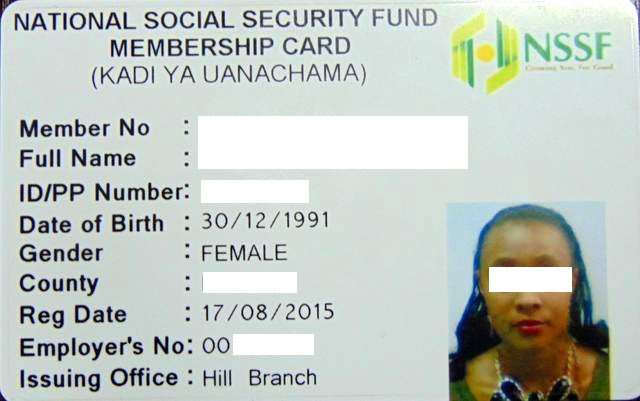National Social Security Fund (NSSF) deductions await workers earning monthly salaries above Sh18,000 from February, with contributions for those earning at least Sh36,000 expected to double.
The burden will equally be felt by employers who will match new pension contributions, the NSSF said on Friday as it issued an update on pension rates that will apply from February after the first year of implementation of the NSSF Act, 2013.
Companies which have no private pension plans will see their workers take the biggest hit since the higher NSSF deductions will result in a lower take-home pay. Those with independent pension plans are however not expected to see their employees suffer lower earnings since the higher NSSF deductions will result in a reduction of what they remit to the private schemes but the total will remain the same.
Gradual implementation of the law started in February last year and the ultimate objective is that all workers will end up contributing six percent of their salaries to the NSSF.
Table: How new NSSF contributions will affect workers in different salary scales
– Employers will match contributions made by employees
Salary scale Current contribution New contribution
10,000 600 600
18,000 1,080 1,080
20,000 1,080 1,200
30,000 1,080 1,800
36,000 1,080 2,160
50,000 1,080 2,160
100,000 1,080 2,160
Currently, only workers earning up to Sh18,000 make full contributions (six percent of their salaries) to the mandatory pension, but the announcement by NSSF raises the scale to workers earning up to Sh36,000.
Ruto: Government will support unemployed Kenyans on NSSF savings
“This is therefore to notify all employers, effective February 2024 payroll, of the NSSF contribution rates for the second year as indicated below,” NSSF said in the Friday announcement.
The new changes by NSSF mean that there will be no increase in mandatory pension contributions for workers earning Sh18,000 and below, who have already been contributing six percent of their salaries.
Those earning above Sh18,000 (who have been contributing a flat figure of Sh1,080 since February last year) will, pay higher amounts. The peak of the pension contributions to apply until January 2025 will be for workers earning up to Sh36,000 monthly, who will from next month contribute six percent of their salaries to the mandatory pension.
A worker earning Sh36,000 currently contributes Sh1,080 to the mandatory pension (with their employer matching the contribution), but from February, the worker will be deducted Sh2,160, which is double the amount they have paid over the past year.
The Sh2,160 mandatory pension contribution will apply to all workers earning Sh36,000 and above, who will now pay double the Sh1,080 they have been contributing over the past year, until January 2025.
NSSF in the Friday announcement raised the lower earnings limit from Sh6,000 to Sh7,000. The limit guides the maximum pension contributions that must go to the NSSF (Tier one account), which now rises from Sh360 to Sh420.
This means that for all workers earning Sh7,000 and above, Sh420 of their contributions must be submitted to NSSF as a legal requirement, while for all workers earning below the salary scale, six percent of their salaries will be submitted to NSSF.
The NSSF also doubled the upper earnings limit from workers earning Sh18,000 (which has applied since February 2023), to those earning Sh36,000.
“Remittances to the fund should be made by the 9th day of each subsequent month,” NSSF stated.
Before starting implementation of the NSSF Act, 2013, in February last year, all formally employed workers in Kenya contributed a flat Sh200 to the NSSF.
Implementation of the law would have started in 2014 but lengthy legal battles derailed it until last year, after the Court of Appeal in 2022 approved its implementation. The law requires that the contributions be raised gradually over a five-year period.
President William Ruto, during Jamhuri Day celebrations last month, projected that NSSF contributions would grow to Sh1 trillion due to the current model.
Source: NMG
dalanews.co.ke https://g.page/r/CerTmAWCtzj4EBM/review¬¬¬¬¬¬¬¬¬¬ÿÛ C
